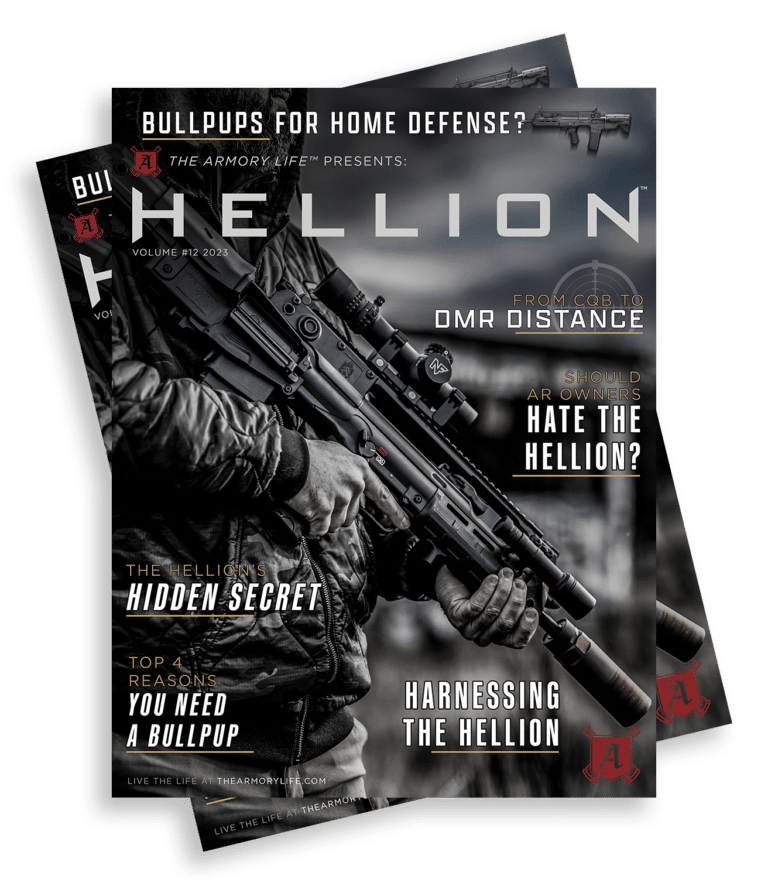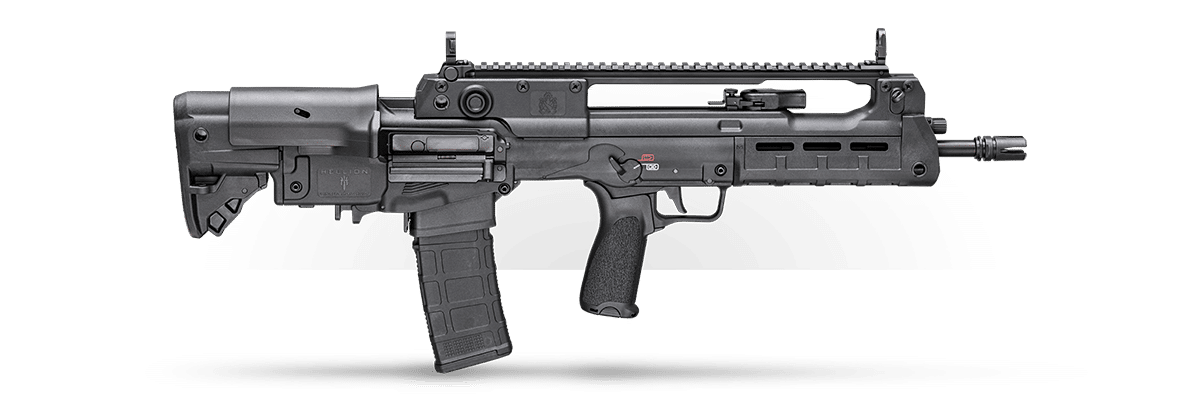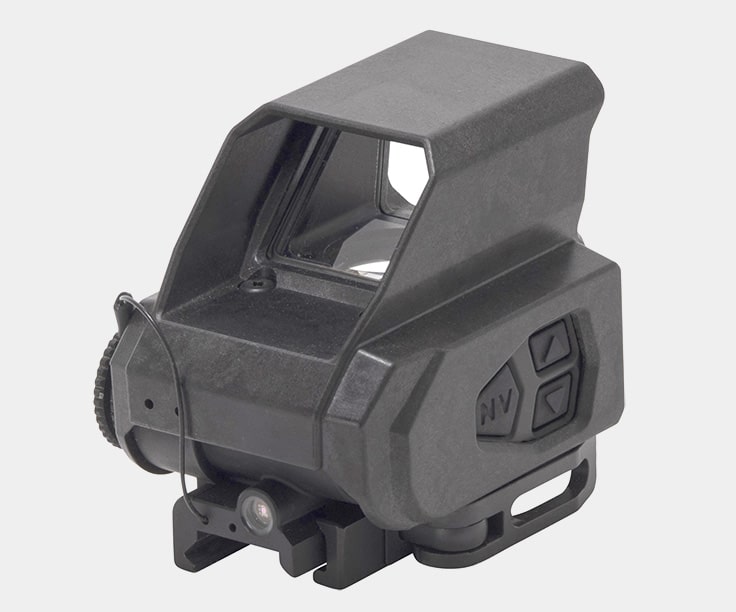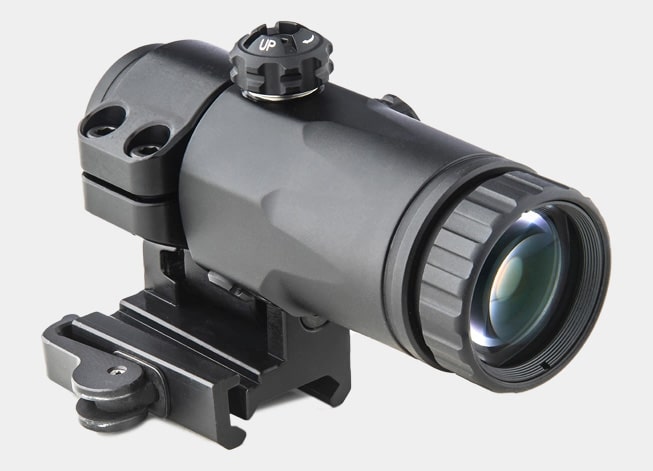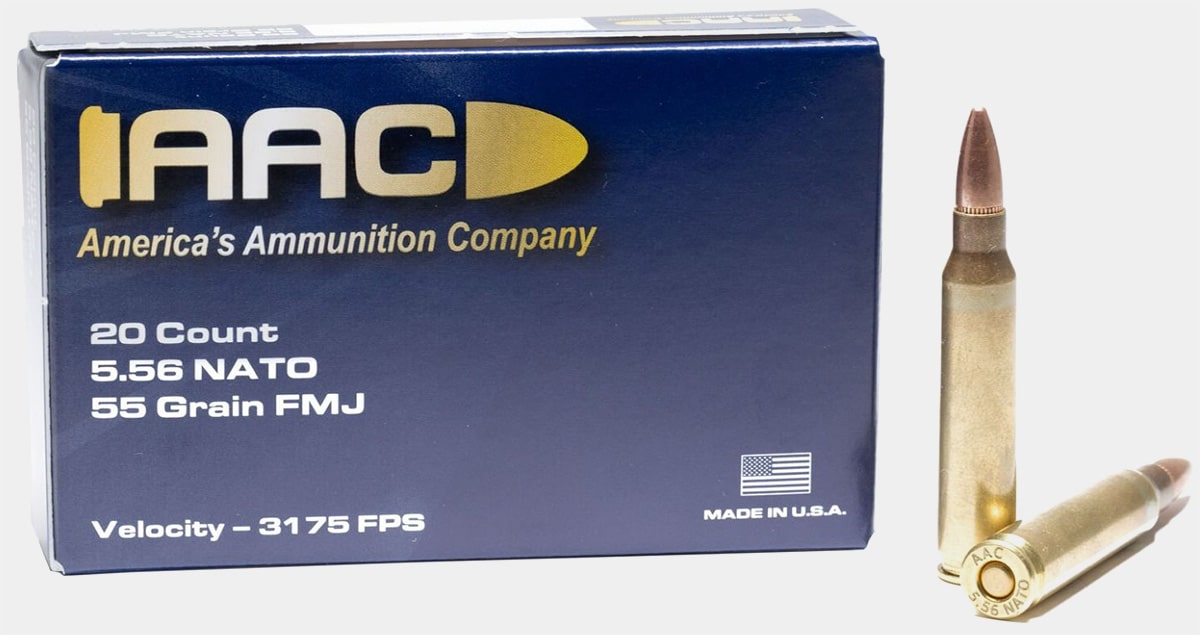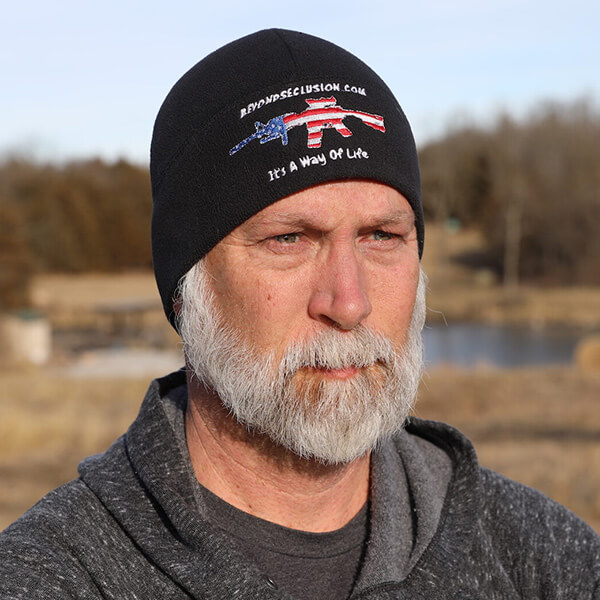If they’re not already, reflex sights are quickly becoming the most popular type of optic found on firearms today. The U.S. military started adopting optics like these in the 1990s, and it just grew from there. I have seen many optics, from the Trijicon ACOG to red dots like the Aimpoints to holographic weapons sights like the EOTech EXPS3 on military and law enforcement firearms. The military discovered the incredible difference that these optics made on the average soldier’s accuracy and shots on target compared to the old technology of iron sights.
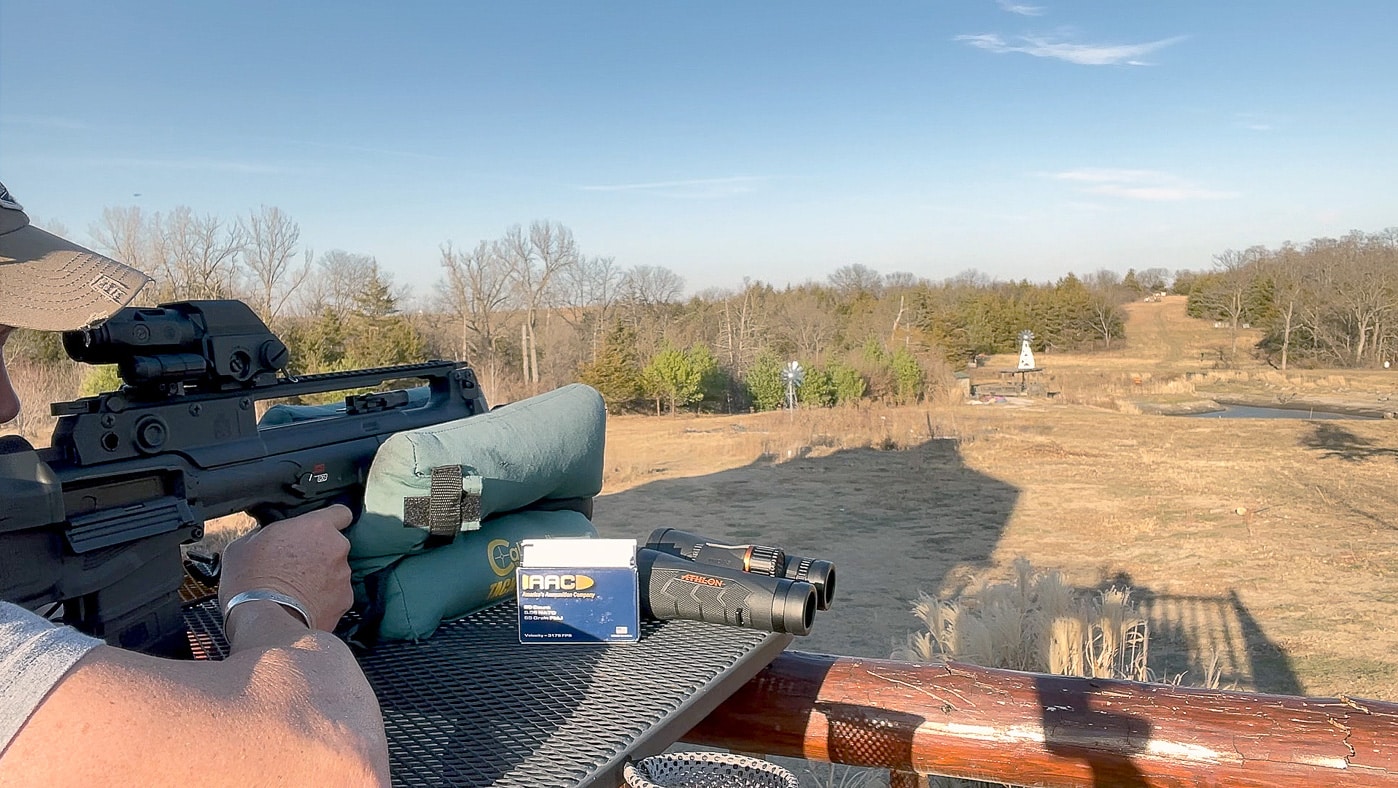
Don’t get me wrong, you can never go wrong with good old iron sights on the Hellion because they will rarely fail you, and if you “break” them, you probably have other issues with the firearm. They are as KISS (keep it simple stupid) as possible, but they have limitations. Irons take a lot of practice for the average shooter to score well at distance and are particularly challenging to use in low-light situations. From first-hand experience hunting with my M1 Garand at sun up and sun down, I know it is difficult or just about impossible to see the front sight post with a dark background in those conditions.
Editor’s Note: Please read the full Springfield Hellion bullpup review.
Test Your Reflexes
So, why choose a reflex or red dot sight over a traditional scope? Depending on the application, a more traditional scope can be too big and heavy as well as not good for rapid target acquisition. And, there is also the question of durability. The ACOG was a fixed optic with low magnification and was perfect for typical engagement distances normally encountered. But what about urban situations where distances could diminish from less than 100 yards all the way down to CQB (close-quarter battle) distances of 10 feet? Clearly, something else was needed.
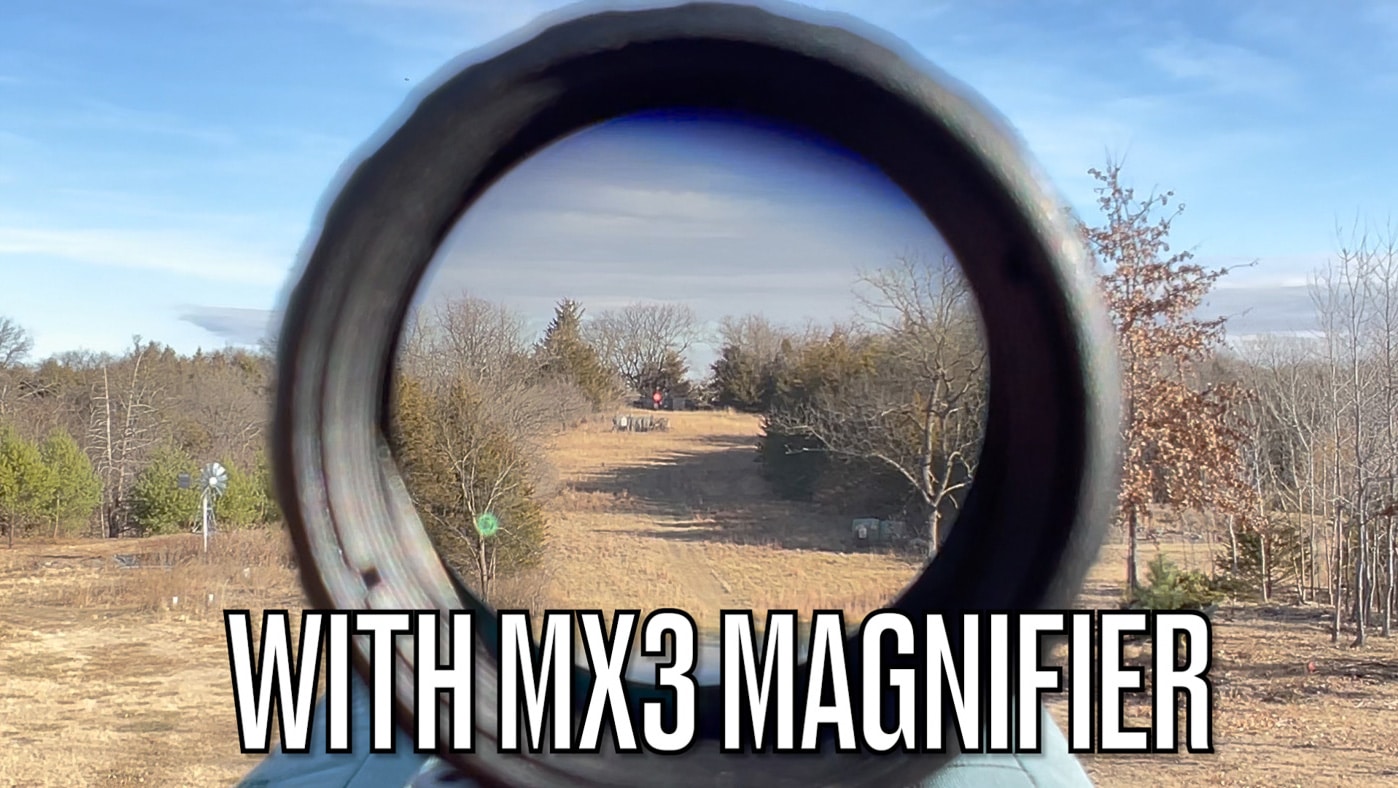
This is where “reflex sights” came into their own. A “reflex sight” is any optic that allows the shooter to look through a lens and see an illuminated projection of an aiming point or some image superimposed on the FOV, or field of view. This can be accomplished in several ways, and each has its advantages and disadvantages. Most people have their personal preference of which method and reticle or image is projected. The most typical is a simple red dot.
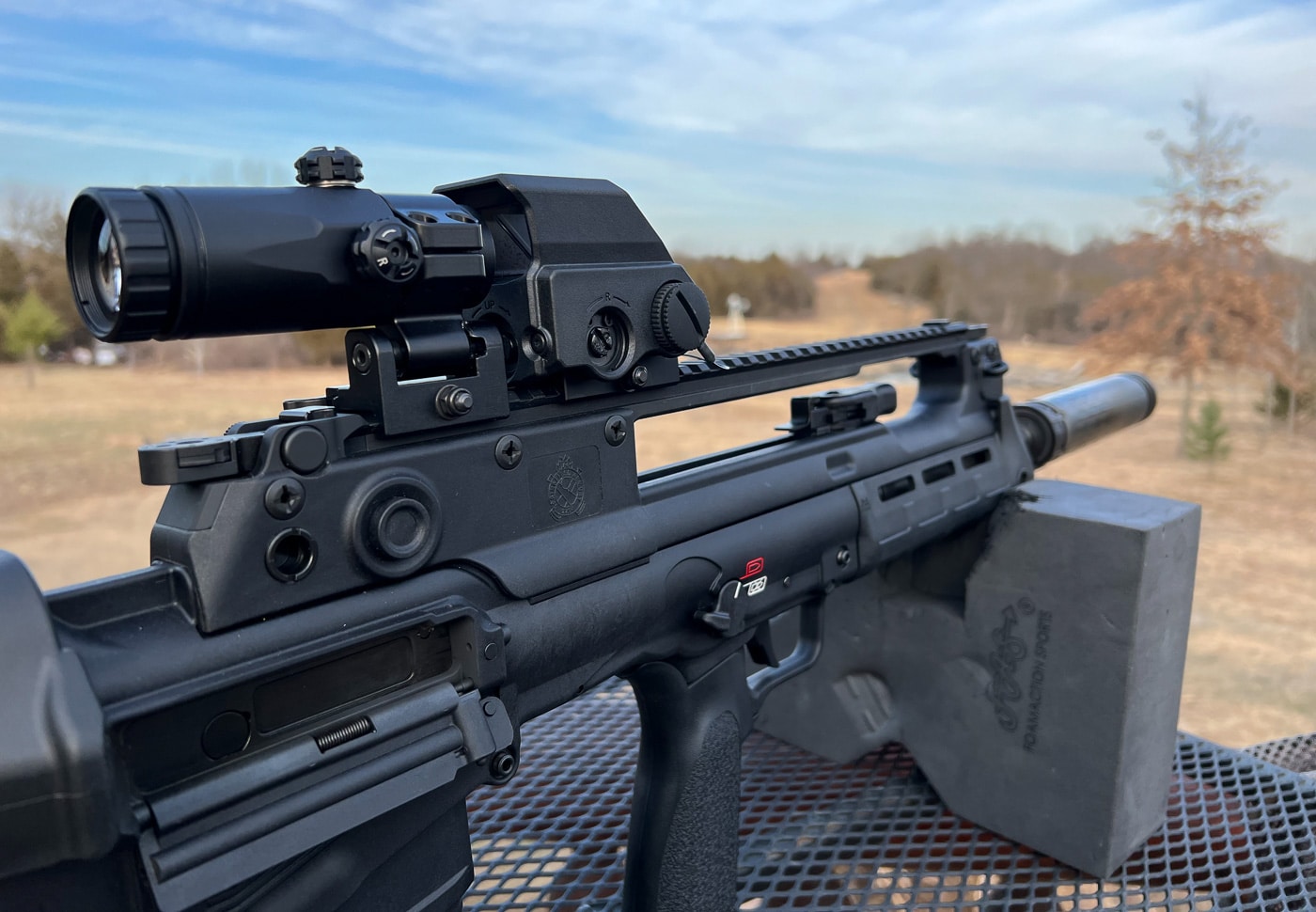
Because the reticle is focused at infinity, it stays in alignment with the optic, regardless of the shooter’s eye position. This is referred to as “parallax free,” which most quality reflex sights offer. This allows the shooter to acquire the target easily and quickly fire accurate shots with reduced practice compared to traditional iron sights or scopes. It also makes taking shots from an unsupported position like standing after moving or even on the move surprisingly accurate and simple.
Pushing It
Many might say the one downside to reflex sights is shooting at distances beyond CQB or beyond 100 yards. Or is it? What if we could consistently hit targets out to 300, 400 or even 500 yards with a red dot?
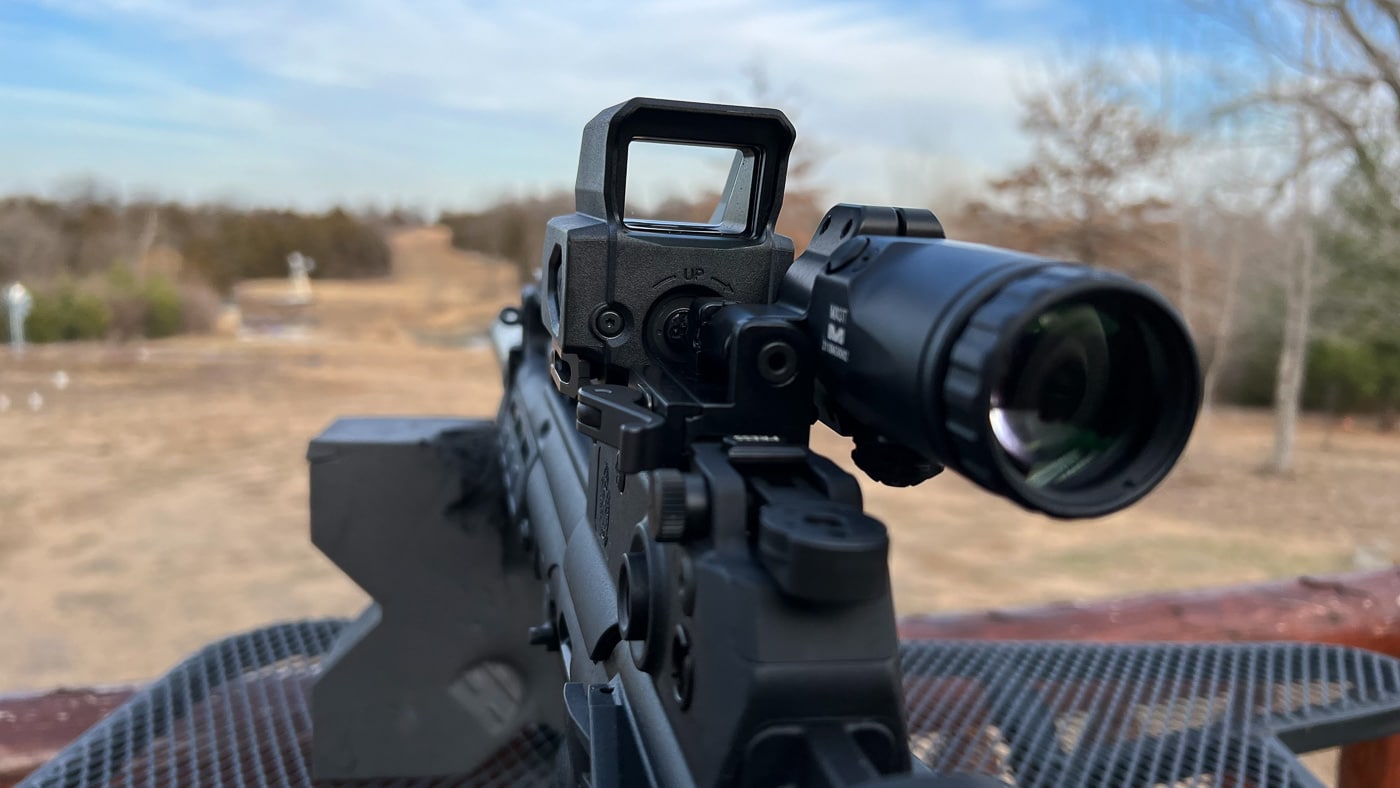
One way to easily and quickly extend the range of a red dot is to add an optional magnifier. Just like that name says, it’s nothing more than a magnifier that you can put behind a reflex sight to change it into a 3X-powered or more optic. While 3X is the most common power of magnification for this, you can get all the way up to 6X.
The more magnification you get, the bigger and heavier the magnifier is going to be, and the worse your eye relief (ability to easily see through it) is going to be. I have found the 3X is perfect to effectively extend the range of a red dot well beyond CQB distances.
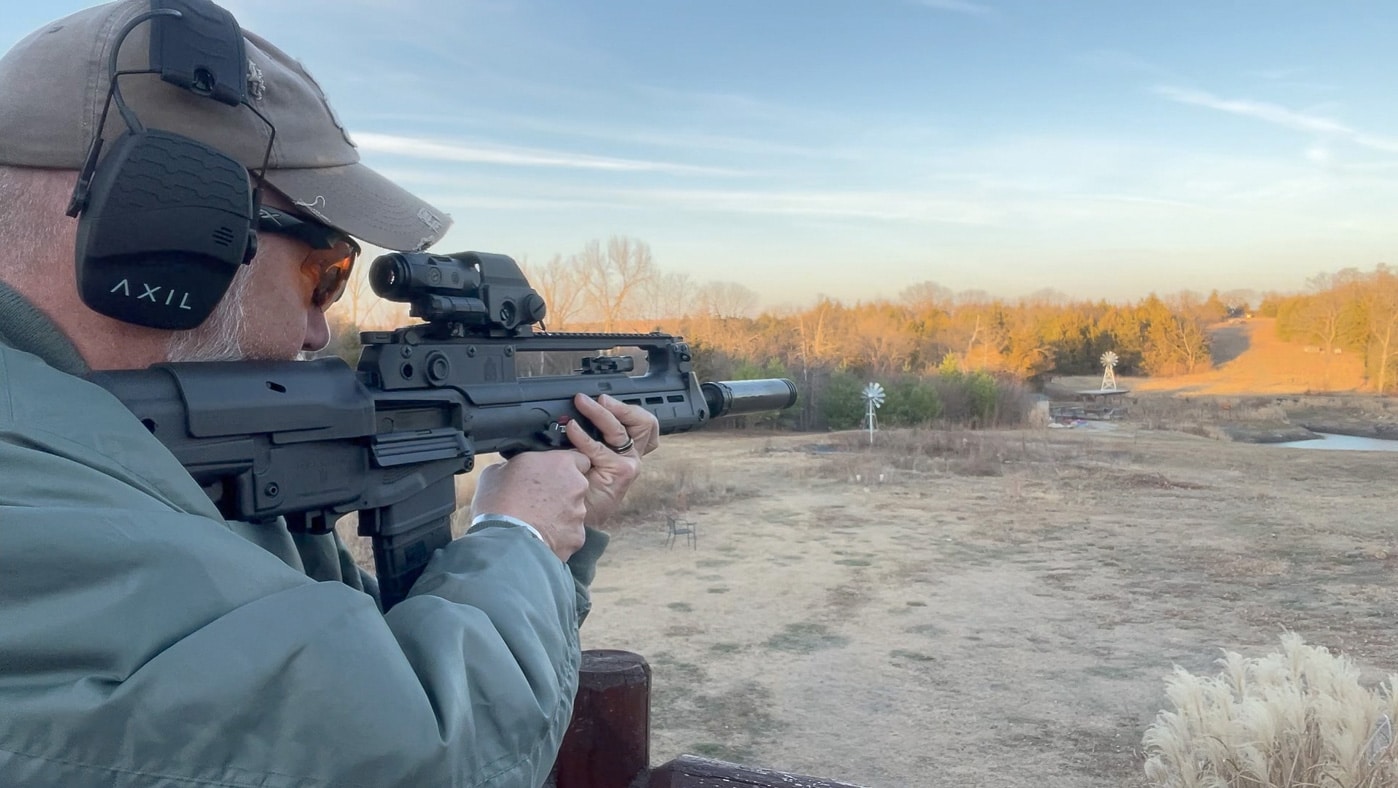
Another term you often hear is “battlesight.” This typically refers to an optic that can withstand the rigors and abuse of what would be encountered on the battlefield. It’s an optic that is tough as nails, will take a beating and keep working. A good example of this is the Meprolight Tru-Vision, from a company that makes optics for the Israeli Defense Forces (IDF).
Going Long with Short
I have been working with the Springfield Armory Hellion “bullpup” for quite some time now and really like it. Chambered in 5.56mm, it gives you 16”-barreled performance in a package about the same length as a short-barreled rifle.
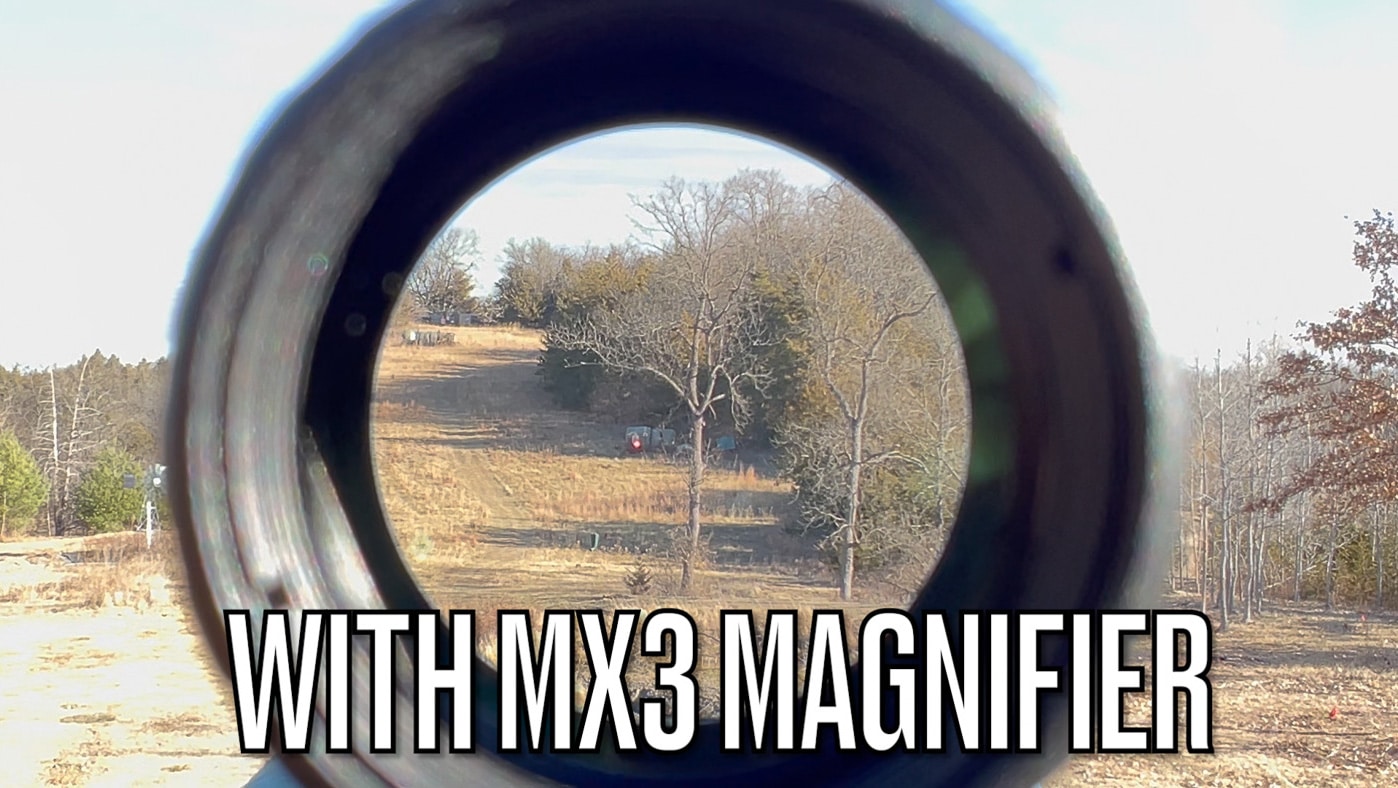
So, what better of a platform to test out the capabilities of an optic designed for close range, but used at long range? So, I kitted up the Hellion with the Meprolight Tru-Vision along with a Meprolight MX3 magnifier unit.
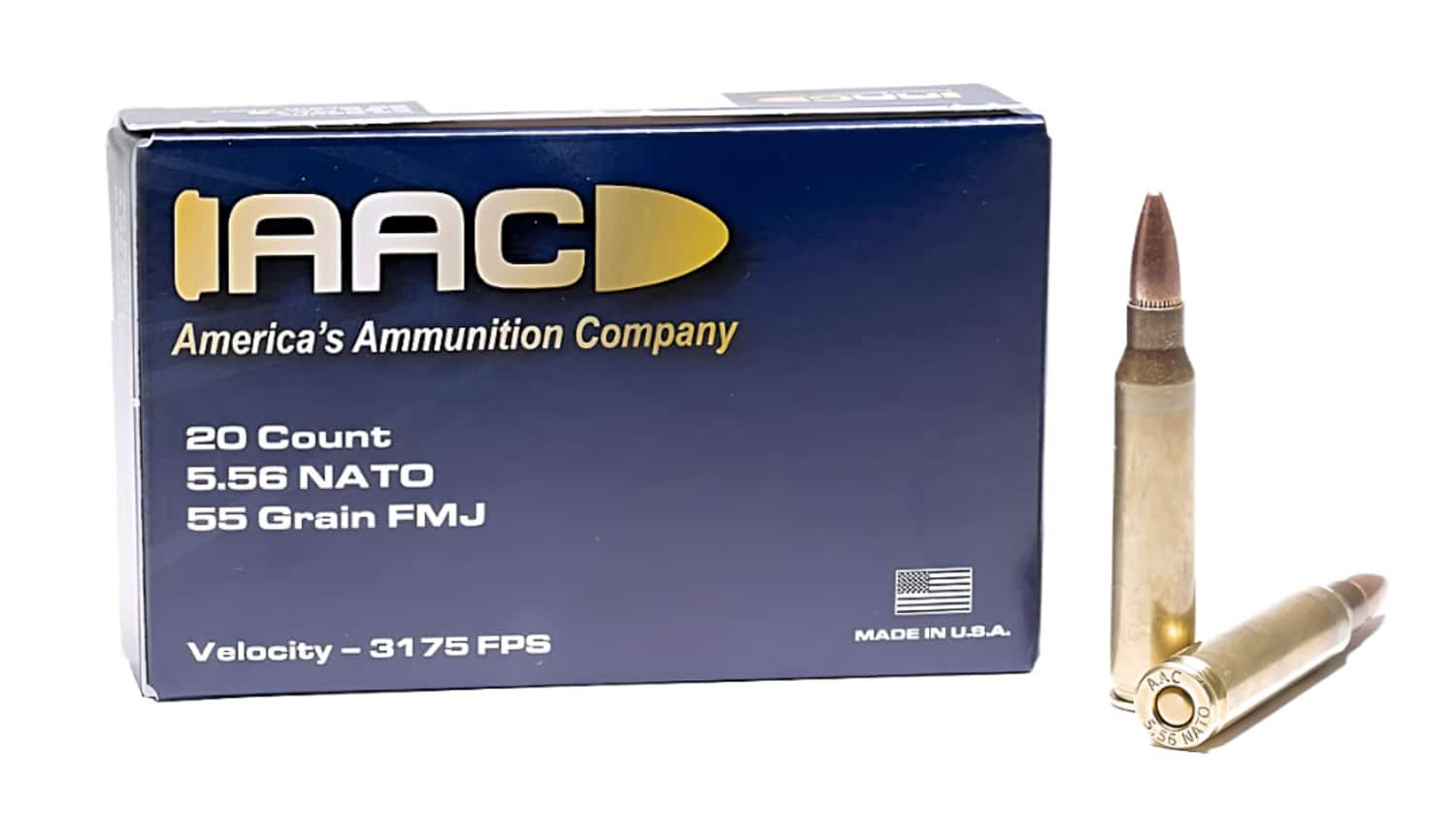
Over the course of a range session, I pushed the Hellion out to several hundred yards. During that day, I discovered the gun and the optic made for a very capable combination. After getting it sighted in (and found that it grouped extremely well at 50 yards), I started pushing it out to distance. It quickly proved itself at 300 yards right out of the gate — and all with FMJ range ammo.
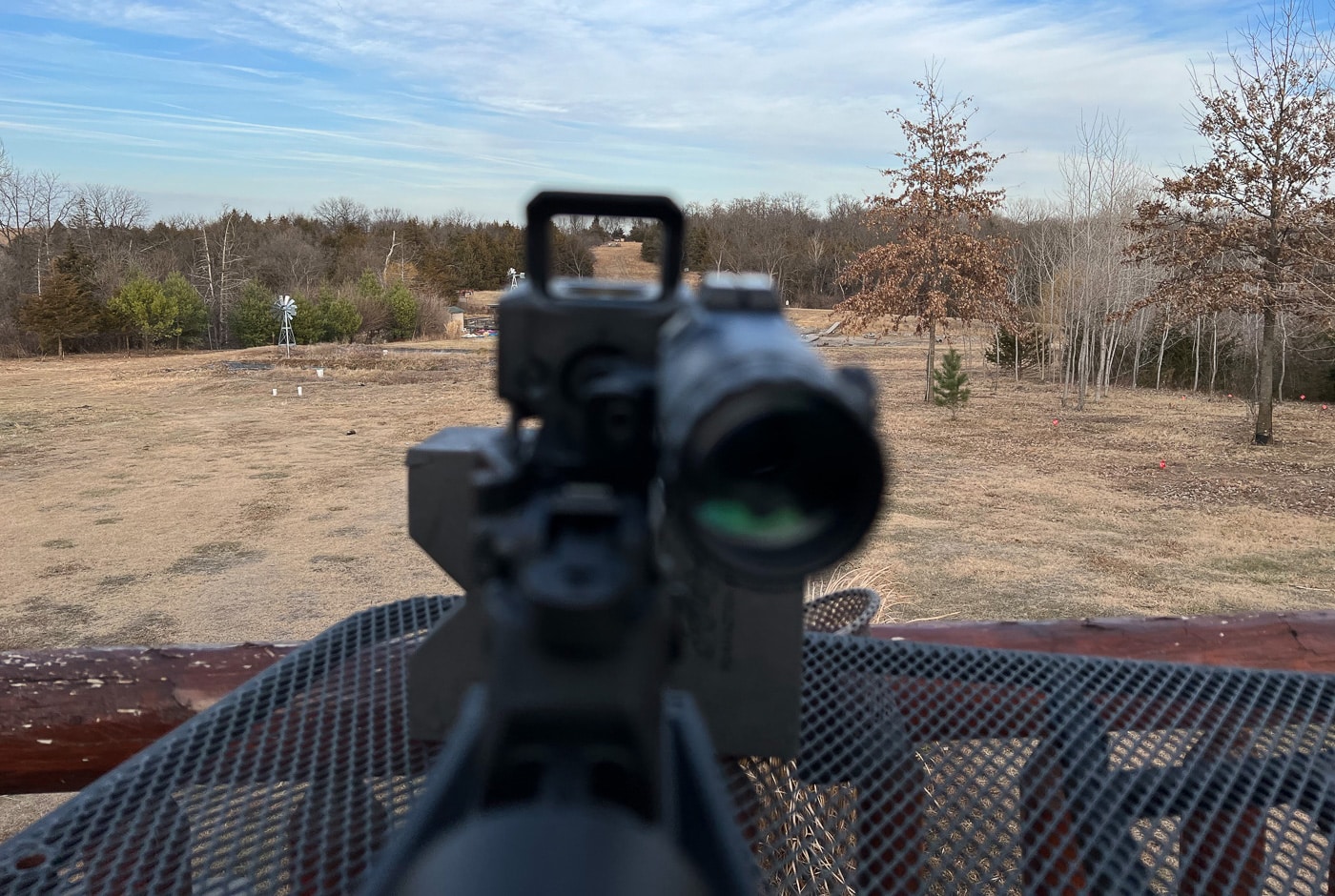
Once I proved that the Hellion and the Tru-Vision could consistently hit at 300 yards, I then pushed it out to 500. How did it do? It was dead on. I was able to consistently hit every shot at that distance. For fun, I then shot the combo unsupported and standing at 200 yards, and found I could still hit. So, I pushed it out to 300, and I hit again. At 400? I was able to do it again.
Conclusion
I think it’s safe to say that the Hellion and the Tru-Vision — both with and without the magnifier — make for a very capable combination. In fact, it proved to be even more effective than I would have expected with these demanding requirements. It’s a match made in heaven.
Editor’s Note: Please be sure to check out The Armory Life Forum, where you can comment about our daily articles, as well as just talk guns and gear. Click the “Go To Forum Thread” link below to jump in and discuss this article and much more!
Join the Discussion
Featured in this video
Continue Reading
Did you enjoy this video?

 165
165




